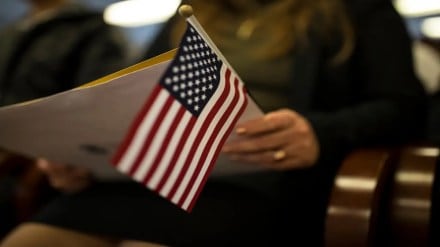A new US regulation mandates that all filing fees for benefit requests submitted to USCIS must be paid electronically, even for paper-filed forms, marking a significant shift in the payment process for immigration-related applications.
H-1B and green card applicants will be required to make all U.S. Citizenship and Immigration Services (USCIS) filing fee payments electronically. USCIS has ended all paper payments starting October 28, 2025.
One will have to use a U.S. bank account or a credit or debit card, as USCIS has discontinued accepting paper checks and money orders for petitions and applications.
Payments need to be made only through US bank accounts. All applications will be rejected if payments fail or come from non-U.S. bank accounts. “USCIS doesn’t accept international payments. That can pose a challenge for applicants outside the country or those who have just arrived and don’t yet have a US account,” says Divij Kishore, Founding Attorney of Flagship Law, a dedicated top-tier immigration law firm.
After October 28, USCIS is accepting only ACH debit transactions using Form G-1650 or credit card payments using Form G-1450. This new ACH debit payment option is in addition to the existing option of paying by credit card using Form G-1450, giving individuals multiple options to pay required fees.
“All USCIS filing fees for petitions and applications that require payment—such as H-1B (Form I-129), dependent or student extensions (Form I-539), work authorization (Form I-765), and green card applications (Form I-485)—must now be paid electronically by card or U.S. bank account,” says Dmitry Litvinov, CEO and Founder of Dreem.
“Paper checks will no longer be accepted, and filings will be rejected if payment fails. Only a few categories remain fee-exempt, and limited hardship exemptions (Form G-1651) are available for those unable to pay electronically,” adds Litvinov.
H-1B, green card applicants and other petitioners need to ensure their accounts have sufficient funds to cover all filing fees. All applicants, petitioners, and requestors who file benefit requests with USCIS and pay fees will be impacted.
“As for foreign students, those applying for F-1 visas outside the United States file with the U.S. Department of State, not USCIS, so this rule doesn’t affect them. Within the US, F-1 students applying for benefits such as OPT or STEM extensions file with USCIS and can use personal or institutional payment methods as long as they are electronic,” informs Kishore.
Employers filing petitions for foreign workers for example H-1B, H-2B, Foreign national individuals filing petitions or applications such as change of status, extension, travel documents, Educational institutions, relative sponsors, and immigration counsel who handle filings for foreign students, dependents, and any payor who previously used checks or money orders to pay filing fees are going to be impacted, according to Litvinov.
If you do not have a U.S. bank account, you cannot use Form G-1650, but you may submit Form G-1450, Authorization for Credit Card Transactions, and use prepaid credit cards to pay filing fees.
It means foreign students or H-1B applicants need not necessarily open U.S. bank accounts. “To use the ACH debit option (Form G-1650), the payer must authorize withdrawal from a U.S. bank account. USCIS states that “If you do not have a U.S. bank account, you cannot use Form G-1650.” The alternative is to use a credit or debit card via Form G-1450. That means even if someone does not have a U.S. bank account, they may still pay via a U.S.-issued or acceptable card or prepaid card option,” informs Litvinov.
“The challenge is for individuals filing on their own, especially those abroad or without access to the US banking system. Unless USCIS grants a waiver, they’ll need someone in the US to step in and process the payment for them. In those cases, the payment is typically processed through an attorney or employer’s account,” adds Kishore.
